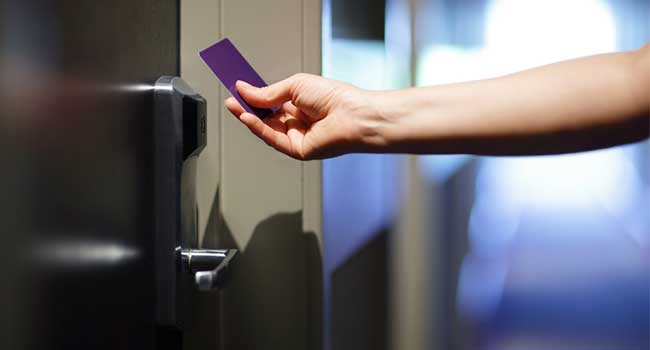
Getting Smart About Smart Cards
- By Eric Widlitz
- Aug 05, 2016
The days of overcrowded clunky keychains encumbering purses and pockets are fading into the past. Technology is moving by the necessity of the actual lock-and-key solution in a number of vertical market spaces. Today, we’re seeing an emergence of key fobs for cars with push-start buttons, and a move towards digital security, mobile credentials, keypads, and biometric access control, such as fingerprint and facial recognition, and even iris detection.
The evolution of the credential has been moving toward a more secure technology. The industry started with technologies like magstripe, which was a low-cost access control solution. Many of these systems are still in place within the higher education market; but with low cost and this “affordable” option comes virtually no security. To put things in perspective, think about your credit cards. In the last few years, we’ve gone from magstripe credit cards, which can be easily copied, to EMV chips, or smart chips. These chips secure information at a much higher level.
Going further than access control, companies and institutions are looking for innovative ways to transcend beyond traditional security measures and methods, improve efficiency and cost, and maximize convenience. One such sophisticated technology solution that can achieve these goals is the utilization of smart cards.
Smart cards can act as electronic key rings with data storage capacity and reliable personal identification capability. Institutions, such as higher education facilities, actively use smart cards for access purposes such as entry to administrative and classroom buildings, residence areas and dormitories, dining facilities, and computer labs. Along these lines, we’re starting to see the rise of virtual smart cards, which is technology that can be ported to different types of media like cards, fobs, wearable devices or mobile phones as long as they have a chip in them that can securely store the credential data.
As access cards get smarter, so too do the readers on the market today. There are many readers available today that are capable of reading both legacy technologies and the newer smart card technologies, making them a great tool for helping any organization transition seamlessly from older to newer – and more secure – technology. Additionally, some of these organizations are shifting from single identification techniques to two-factor authentication at the door, which might include a physical card, phone or fob, as well as a pin or biometric (think something like iris or fingerprint).
The smart card market growth is a great opportunity for integrators and dealers to talk to their customers about the card and reader technologies they are using today – just like the credit card companies are updating to chips, stores and retailers are upgrading to machines that can read these chips and provide more secure transactions. The security market should be taking this into consideration so they can budget for new technology upgrades for physical security, just as they would for any of the IT equipment in use within the organization.
These upgrades might include technology that incorporates biometric access in areas of an organization where it’s especially important to maintain security – in healthcare facilities or a hospital, this might be a pharmacy or narcotics storage space, for example. While biometrics as a whole has not really caught on in North America for access control, they are used and accepted all over the world in everyday use cases. The cost of this technology is also starting to decrease and people are starting to use these methods for applications on their mobile phones, so eventually we will see this become more integrated into our society over time and into an increased number of applications as an accepted form of authentication.
Aside from portability, flexibility and data storage, smart cards offer secure authentication, encryption of sensitive data, protected subscriber information, stored value and access control.
Security and confidentiality are still readily maintained, and the ability to interface with multiple systems offers unlimited possibilities. A campus operates much like a small city, and over the years there has been a necessary emergence of increased security. While efficient access control improves daily operations and security oversight, the convenience of a single multi-functional card is beneficial in many ways.
Physical access, logical access and the ability to manage identities within an organization are features that today’s access control manufacturers offer to increase security and help streamline business processes. Always remember that the best security approach is a layered approach: card plus pin, card plus biometric, card plus video – all of which should be able to be integrated with various security solutions to serve the highest security needs of large institutions and higher education facilities.